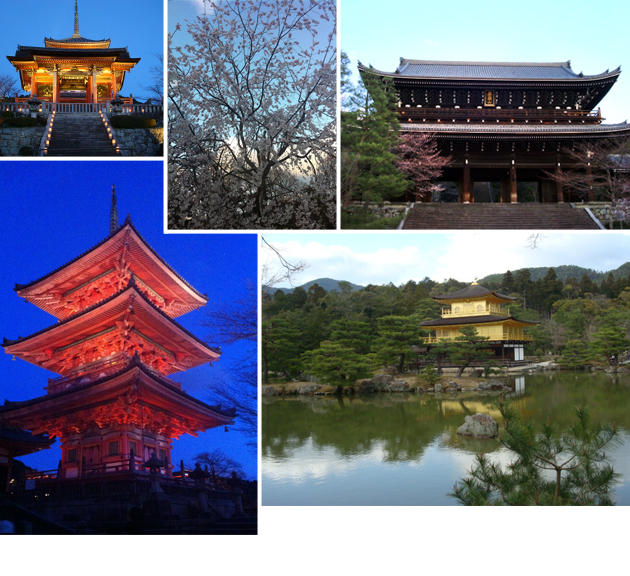
If you’ve ever visited Kyoto, the serene city of 1.5 million in the center of Japan’s main Honshu province, you’re familiar with the ancient capital’s proud claim to 2,000 religious sites. They’re radiant with historic beauty thanks to Kyoto’s narrow escape from destruction during World War II: U.S. Secretary of War Henry L. Stimson famously committed himself to keeping Kyoto off the bomb list, as he had fond memories of visiting the culturally rich city decades prior.
Choosing which of those 2,000 sites to visit, however, can be overwhelming, especially if you only have a day or two to explore. Our trifecta is attainable in a day, and includes the largest, one of the oldest, and one of the most famous and most beautiful:
Chion-in Temple
Located adjacent to stunning, sprawling Maruyama Park (the oldest park in the city), Chion-in Temple was established in the 13th century. By comparison, its massive Sanmon Gate is much newer: It was completed in 1619. Measuring nearly 80 feet tall and about 165 feet wide, it’s the largest wooden gate in the country and is considered a national treasure. Chion-in Temple also houses the largest copper bell in Japan, famous for tolling at midnight on New Year’s Eve — with the help of 17 people. It’s that big.
Kiyomizu-dera Temple
Founded in 778, Kiyomizu-dera, which translates to “pure water temple,” is the second-oldest standing temple in Kyoto (Koryu-ji, the oldest, predates it by about 175 years), and one of the most popular sites in the city. Built atop a steep hill, the massive temple’s grounds encompass multiple pavilions, verandas, shrines and halls. Though it’s breathtaking during the day, the ideal time to visit is after dusk, when the temple is specially lit for nighttime visitors. You’ll hear steady gongs every several moments, the result of adoring visitors ringing in after a devotional prayer.
Kinkaku-ji (Rokuon-ji) Temple
Famously known as the Golden Pavilion, Kinkaku-ji was built in the 14th century as a villa for powerful (and rich) statesman Kintsune Saionji. Compared with other temples, it’s not all that big, but crowds still flock, and for good reason: The second and third floors of this three-story temple are covered with gold leaf on Japanese lacquer. It’s quite literally a shining beacon in the middle of a perfectly preserved Muromachi-era garden, complete with a 600-year-old pine tree.
Photos Courtesy of Lauren Viera

